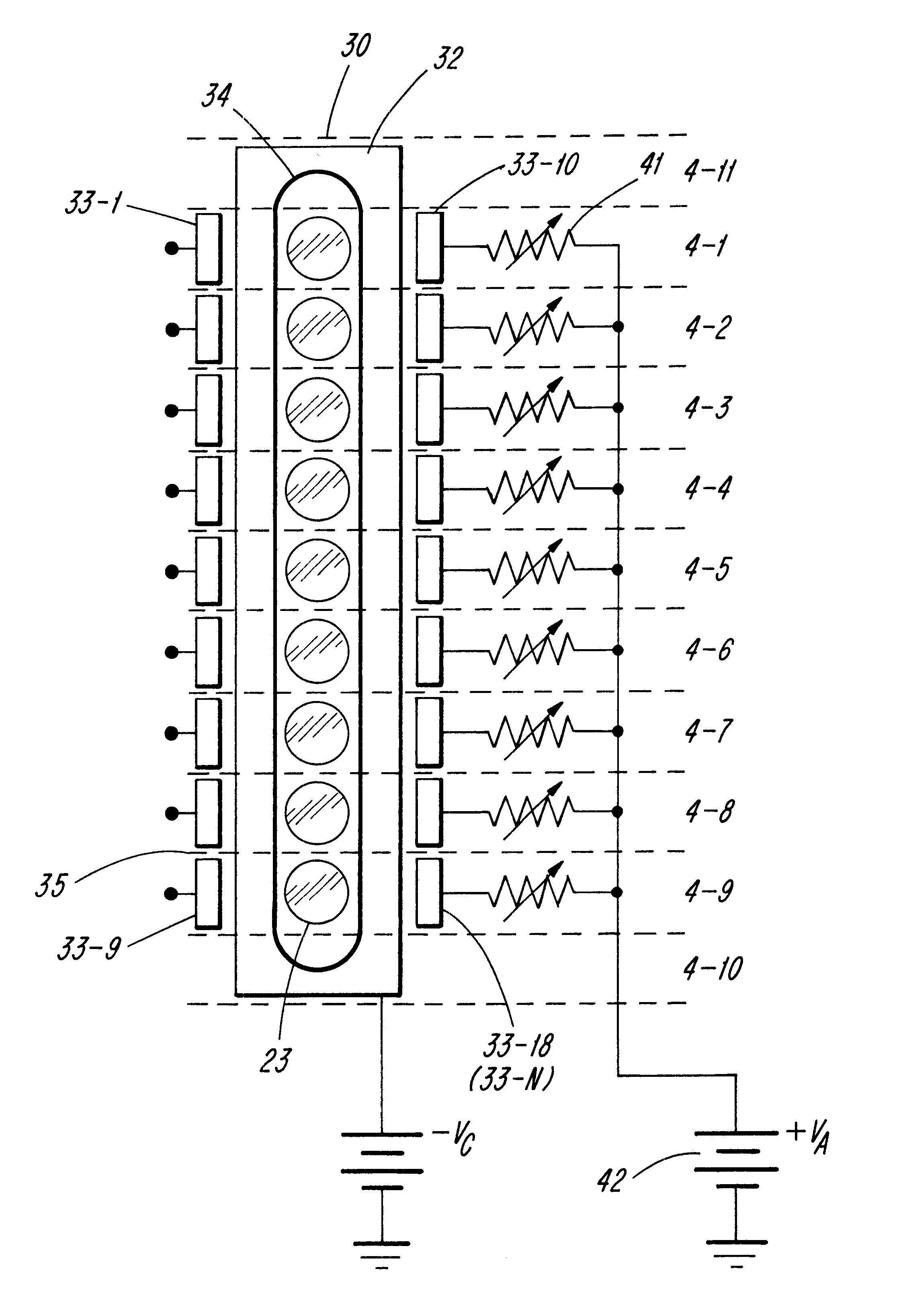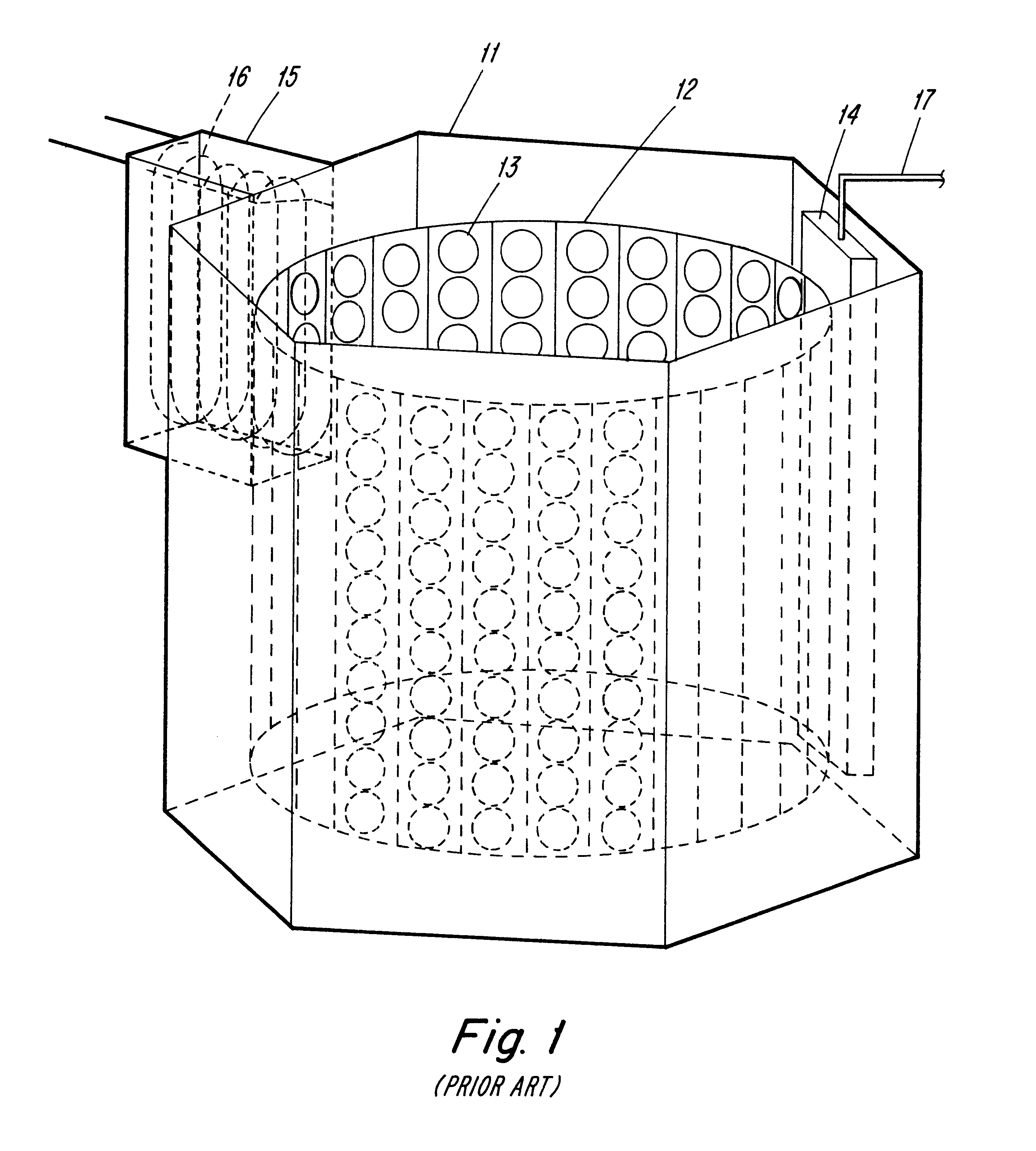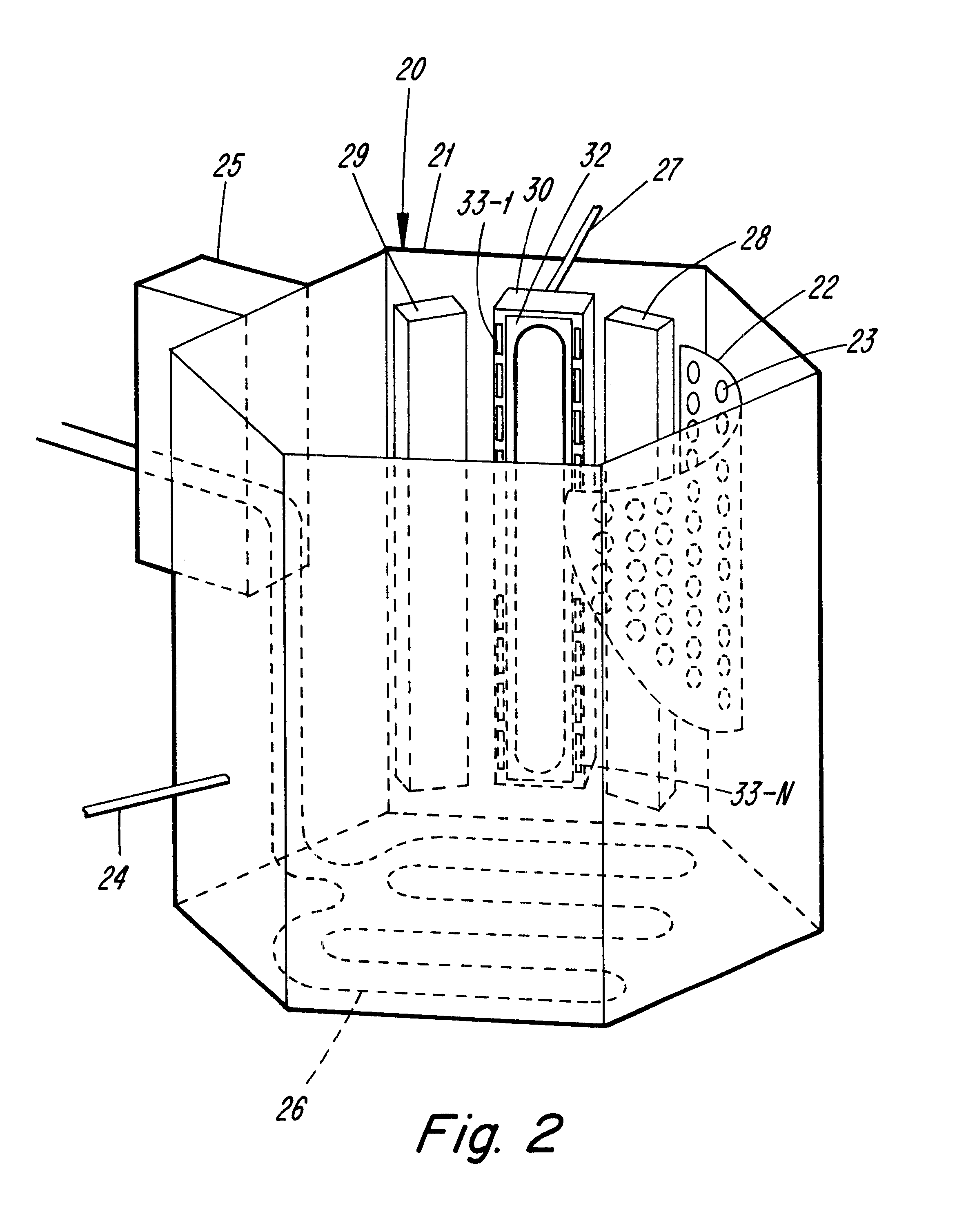Multi-anode device and methods for sputter deposition
a technology of multi-anode devices and sputters, applied in vacuum evaporation coatings, electrolysis components, coatings, etc., can solve the problems of not necessarily providing control of coating thickness, not necessarily addressing controlling the thickness uniformity of reactive coatings, and system typically not producing uniformly thick coatings on multiple articles disposed
- Summary
- Abstract
- Description
- Claims
- Application Information
AI Technical Summary
Benefits of technology
Problems solved by technology
Method used
Image
Examples
Embodiment Construction
The following is an example of a fuzzy logic control process calculation. In the example, we shall assume that the instantaneous operating point has drifted to a Cathode Voltage=370 Volts (Line A of FIG. 10(a)) and a Total Pressure of 8.82 mBar (line B of FIG. 10(b)). From the graphs of FIG. 10(a), one may obtain a Voltage Membership 0.75 "LO" and 0.25 "OK". From the Pressure Membership Functions of FIG. 10(b) one may obtain the pressure membership values of 0.30 "OK and 0.70"HI. (Note that these membership functions happen to add up to 1.00 in each case but they do not in general need to). These membership function values are shown in the top left hand box of FIG. 11 which will be used to track the calculation of the output for oxygen flow (i.e. percent valve opening of a piezoelectric valve).
Next, the membership of the output sets (DECRease, HOLD, INCRease) for oxygen is calculated. Two Rules are used to do this. The appropriate First Rule applied to the Pressure and Voltage membe...
PUM
| Property | Measurement | Unit |
|---|---|---|
| length | aaaaa | aaaaa |
| length | aaaaa | aaaaa |
| length | aaaaa | aaaaa |
Abstract
Description
Claims
Application Information
 Login to View More
Login to View More - R&D
- Intellectual Property
- Life Sciences
- Materials
- Tech Scout
- Unparalleled Data Quality
- Higher Quality Content
- 60% Fewer Hallucinations
Browse by: Latest US Patents, China's latest patents, Technical Efficacy Thesaurus, Application Domain, Technology Topic, Popular Technical Reports.
© 2025 PatSnap. All rights reserved.Legal|Privacy policy|Modern Slavery Act Transparency Statement|Sitemap|About US| Contact US: help@patsnap.com



